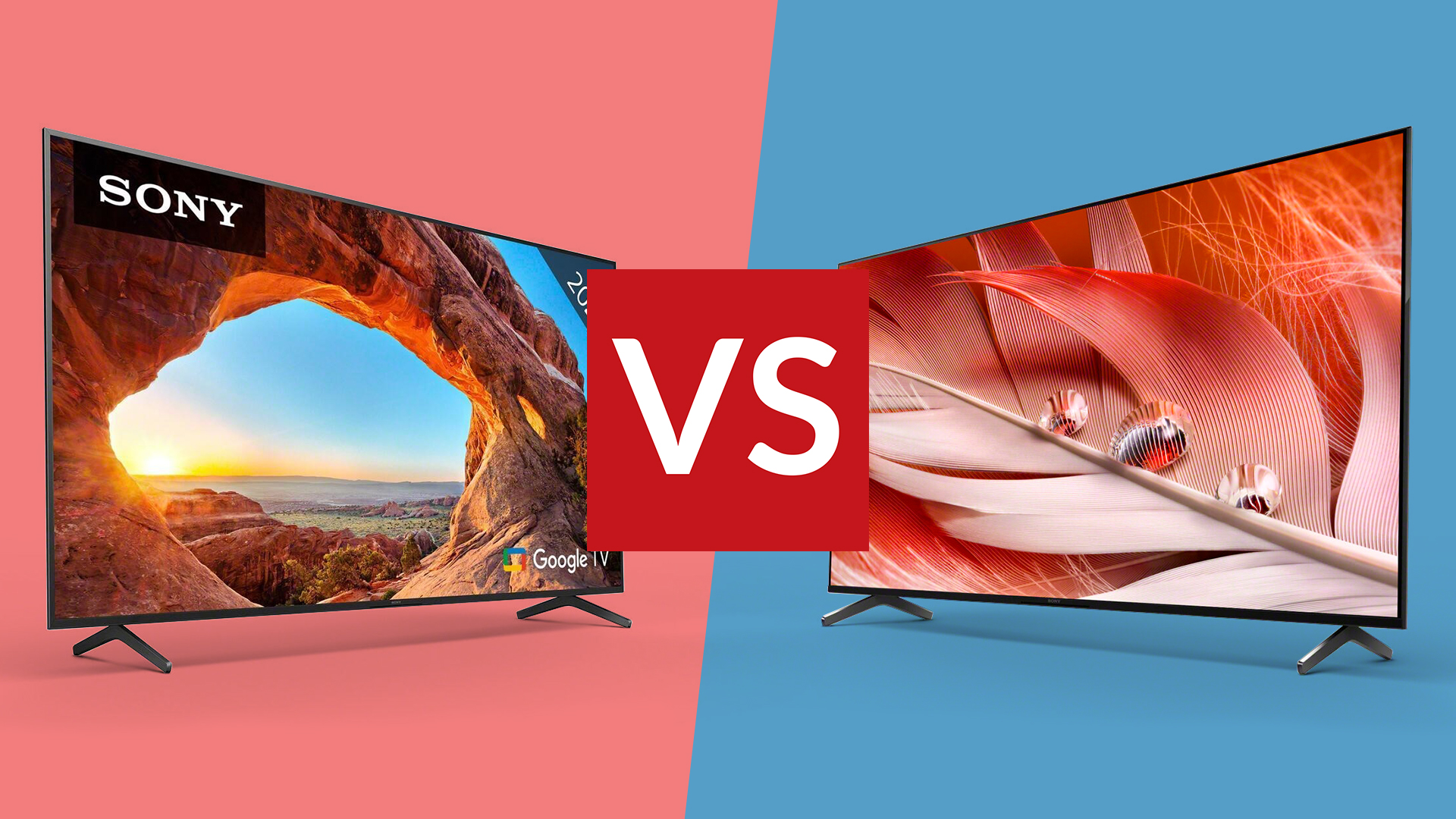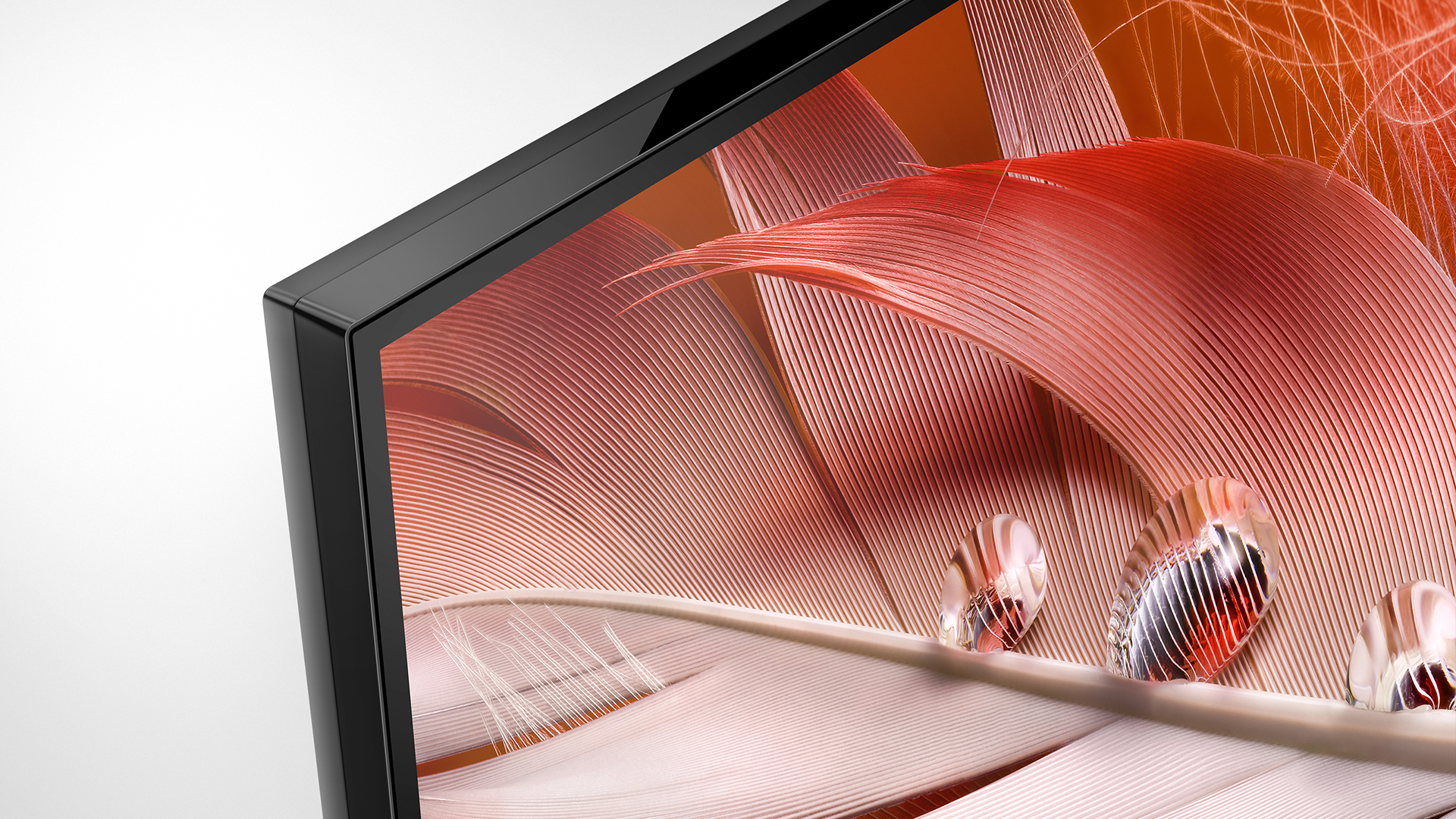

If you’re on the hunt for the best Sony TV in the mid-range bracket, you’re probably debating between the Sony X85J vs Sony X90J.
The X90J costs more across most screen sizes compared to its X85J counterpart, but both TVs have plenty going for them when it comes to specs and picture quality, so the choice might not be as straightforward as you think. But we're here to help!
While we were seriously impressed with the excellent colours, picture quality and interface in our full Sony X90J review, the X85J still offers plenty of bang for your buck when it comes to image quality and connections, and might be more than enough to suit your needs for a more wallet-friendly price.
That’s why we’re going to go through all the key differences between both TVs, to help make your buying decision a little easier. Both of these TVs are great, and feature in our round-up of the best gaming TVs – while the X90J features in our list of the best TVs overall.
Sony X85J vs Sony X90J: price and models
Both models aren't at the most expensive or top-end ones in Sony’s range, and at certain sizes hit our list of the best TVs under £1000 and best TVs under $1000.
The X85J serves up more screen sizes, starting at a compact 43-inch model which is officially priced at £799/$749. The next size up jumps to a 50-inch model for £789/$849, and then 55 inches for £839/$999. The 65-inch, 75-inch and 85-inch models cost £1,099/$1,199, £1,449/$1,599 and £2,249/$2,499 respectively.
However, you'll rarely need to pay the official prices – there's pretty much always some money off these models now. Here are the latest Sony X85J prices from retailers around the web:
Get all the latest news, reviews, deals and buying guides on gorgeous tech, home and active products from the T3 experts
Sony’s higher-end X90J range kicks things off with a 50-inch model for £949/$1,099 officially. The 55-inch model is where things get interesting, as the official price is just £999/$1,199 – but with the sale prices we've been seeing, it can be only a tiny bit more than the 55-inch X85J. Step up to the 65-inch model and the price jumps to £1,499/$1,499. Lastly, the 74-inch X90J can be had for £1,799/$2.099.
Again, though, we're seeing pretty big discounts on these models at pretty much all time currently. Here are the latest Sony X90J prices from retailers around the web:
Overall, if you’re looking for a smaller TV, then the X85J is obviously the way to go, as it offers a 43-inch model. If you’re after the popular 55-inch size, then it’s probably worth stretching that little bit extra for the higher-end X90J, as it’s not much more in the grand scheme of things, especially if you’re looking for a TV that’ll last you up to ten years or so.
If size is important, then the 65-inch+ models of the X85J offer more screen for your buck. If you’d rather pay less for the same size screen, then that makes total sense — though you’ll have to weigh up factors like picture quality too. Speaking of which…

The Sony X90J is better for contrast and HDR performance.
Sony X85J vs Sony X90J: picture quality
It’s time to jump into why the X90J is more expensive than the X85J. The first major difference is the imaging processor. While the X85J has Sony’s X1 processor (as used on its high-end 2020 TVs), the X90J packs in the newer XR picture processor, which is also found in Sony’s 2021 higher-end TVs. The latter promises Sony’s best, most realistic picture quality to date, thanks to some very clever tricks – namely, an algorithm that claims to mimic the cognitive features of the human brain when it analyses picture and sound. But what does that mean?
In essence, the XR processor determines what we would determine to be the most important objects in a scene, such as people or animals, for example. It then works on distinguishing these objects more, so that we’re more focused on them without any effort on our part. In other words, the XR processor analyses colour, contrast, texture, depth and detail in multiple zones, before adjusting everything from brightness to contrast to provide the most realistic picture possible. Or so Sony says – the results are certainly massively impressive, and are class-leading for this price.
The X1 processor in the X85J is no slouch, mind, using advanced algorithms to cut out noise and boost detail, including with clear motion handling that avoids the 'soap opera' effect. If you’re torn between the two though, especially at the 55-inch size or larger, then it makes sense to get the XR-toting X90J for its newer image processing smarts, because you'll get fewer imperfections in the picture, and you notice issues more at larger sizes.
Another major win for the X90J is the fact that its LCD panel uses a direct, full array LED backlight, versus the X85J’s offering. This means that the X90J offers noticeably superior deeper black levels and improved contrast for stunning HDR, which is a key win in our book. Lastly, the X90J also offers options for tinkerers to customise image settings to their exact liking, while the X85J does not.
Ultimately, if you’re looking at the 55-inch model where the prices are at their closest, the X90J is an absolute no-brainer. If a larger screen size is more important than these picture and audio details though (bearing in mind the X85J is still a formidable TV in its own right), then you might want to save a bit for that larger screen size… at least, depending on how you feel about sound.

The Sony X85J doesn't have the same fancy speaker system as its bigger sibling.
Sony X85J vs Sony X90J: sound quality
The previously mentioned XR processor also blesses the X90J with superior audio processing, thanks to a feature called Acoustic Multi Audio. This enables the X90J’s built-in sound positioning drivers, paired with additional speakers at the bottom, to provide a better overall spatial listening experience, with sounds following the on-screen action, and coming across clear and full.
Things like voices, for example, will sound like they’re coming from the centre of the screen, similar to a dedicated central channel in an actual surround sound system. There’s also a fancy new 3D surround feature which provides audio vertically and to the sides, to better simulate a dedicated multi-speaker setup. Obviously you’ll get more punch from a high-end soundbar or actual separate speaker setup, but you’ll won't need one out of the box, which helps make the higher price of the X90J even more palatable.
The X85J’s X-Balanced speaker setup still provides decent bass and clear voices, but it’s obviously the weaker setup out of the two sets, which partly explains the price difference. If you go for a bigger size, you'll probably want to think about adding one of the best soundbars so the scale of the sound matches the picture… which means you might not be saving as much over the X90J as you expected in the long term.

Both TV feature a slim bezel and pretty premium build quality.
Sony X85J vs Sony X90J: design and features
Everything from the physical design of both sets to their remotes is near-identical. Both TVs are, as you’d expect, sleek rectangles with minimal black bezels, supported on identical inverted v-shape feet at either end. If you’re going for a 55-inch screen or bigger, you’ll want to bear these feet in mind, as they’ll need a surface as wide as the TV to rest on if you’re not wall mounting.
They both also share the same remote control design, along with four HDMI ports, with two of those being the newer HDMI 2.1 variety, fully supporting consoles like the PlayStation 5 and Xbox Series X. This means that both sets support 4K gaming at a 120Hz refresh rate, taking advantage of both next-gen consoles. They can’t, however, run at 120Hz with Dolby Vision content running at the same time. This means that for both models, you’re limited to Dolby Vision content at 60Hz. They do both support Variable Refresh Rate gaming, though, and have a very low input lag.
The X90J is part of Sony's 'Perfect for PlayStation' brand, which means that the PS5 actually customises its HDR output to better match how the TV works, meaning that if you have a PS5, you'll definitely get the best picture quality from that model.
In terms of the OS, both TVs are powered by Google TV, which is a welcome upgrade over the Android TV interface used in previous Sony sets. We’re big fans of the refreshed home screen, with Google’s powerful Assistant functionality thrown in for good measure. Both the X85J and X90J will definitely feel like next-gen TVs in normal use as a result.
Sony X85J vs Sony X90J: verdict
If you’re torn between the 55-inch model of both of these TVs, then it definitely makes sense to go for the slightly more expensive X90J, as it’s currently only a little more. Also, if you’re after a 43-inch set then the X85J makes that easy, as it’s the only one of the two sets offering a smaller screen.
For considerations over 55 inches, though, you’ve got to weigh up the importance of screen size/cost, vs picture and audio quality. As mentioned, the X85J is no slouch, so if you want a 65-inch or 75-inch TV to fully immersive yourself and are happy to spending a few hundred less for what will still be a pleasurable viewing experience, then you'll really enjoy it.
If, however, you’re looking to future-proof your purchase and want better quality audio and video, then that extra outlay will be worth it in the longer term. Either way there’s no wrong answer, it just depends on your needs and budget.

Esat Dedezade is a freelance writer with a penchant for all things tech, lifestyle and gaming, having worked for numerous online and print tech publications for over 10 years. Previously the editor of Microsoft News Centre Europe and deputy features editor at Stuff, he writes for GQ, Wired, Metro, Stuff, TechRadar, Trusted Reviews, Decrypt, and more, with countless trade shows under his belt to boot. Special skills of note include the power to instantly summon the perfect gif for any given situation, a vast and frightening familiarity with the strangest and most obscure corners of Reddit, and the ability to befriend any cat that happens to cross his path.